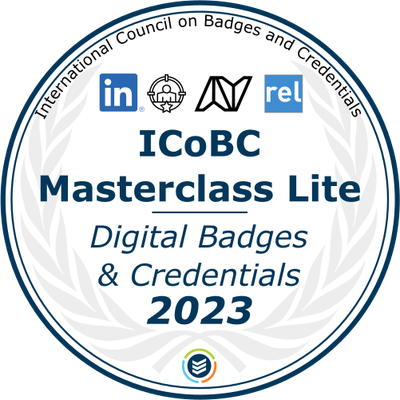A while ago I completed a Masterclass on Digital Badges & (Micro-)Credentials. I was not really sure what to expect but signed on either way since the topic intrigued me. I can say that I was not disappointed. Laid out over one month, the course looked at digital credentialing from different angles and unboxed the complexity of the topic. Let me briefly wrap up what I learned and what impressed me the most in the world of digital credentialing.
At the start, the course instructor provided an introduction to digital identities and illustrated the benefits and challenges of using verifiable credentials for individuals, providers and other stakeholders. What struck me most were not the course contents or learning goal taxonomies but the importance of the credential itself. In other words, the nature of the certificate. The package. The “envelope” as put in a metaphor by a consultation group appointed by the European commission which looked at quality assurance of micro-credentials. Speaking about the technology behind a credential, it is needless to say that the time of the paper-based certificates is counted. Last year, I had received a certificate for serving as judge, contributing to the evaluation of projects that had been submitted to the QS Reimagine Education Awards. After the evaluation rounds, the QS team – as issuer of the certificate – provided me with a link to the platform Accredible. Accredible not just provided me – as holder of the certificate – with the certificate alone. Through the platform, I can swiftly share certificates via e-mail or on multiple apps including LinkedIn and WhatsApp. Any organisation or person that would be directed to the platform – as verifier of the certificate – would then see information about the tasks entailed as well as information about this specific education award and issuing date. There are of course many other validating platforms.
In the Masterclass, we learned how to create and issue our own open badges using an online platform. While it was easy to include the badge I had received from Accredible on that platform, it did not yet work to include others. The course sketched the future of digital wallets and learning pathways. In the future, we do not only receive digital and shareable credentials. As lifelong learners we should also be able to integrate them in our wallets, i. e. spaces where we will be able to independently store our credentials.
There are still many challenges to tackle, including technical interoperability and the lack of standardisation practices. Until we get there, I will keep on learning. At the end of the course, someone said that most importantly, credentials should help people to achieve their goals.
For more information and inspiration:
International Council on Badges and Credentials [ICoBC]
Final Report – A European approach to micro-credentials. Output of the micro-credentials Higher Education consultation group (December 2020)


Leave a Reply